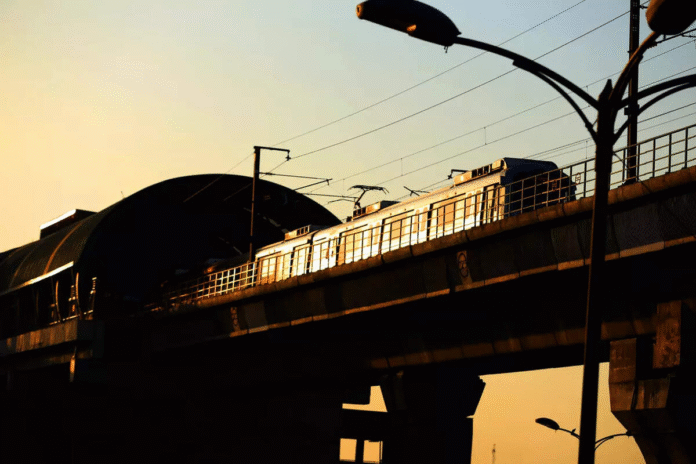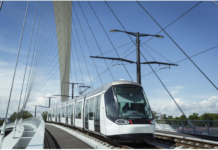Abstract
The world is transitioning toward a future that is quite promising if seen from afar; however, the road is long. Climate change and global warming are the terms that have become the most well-known in the past few years due to their drastic impact on the world, and they are hovering over the future that is envisioned for the generations to come. The countries around the world are striving to boost their economies by upgrading their infrastructure; however, this process has also expedited the growth of urbanisation. With increased urbanisation, the cities are expanding in every aspect to meet the demands of the increasing number of people. The cities consume a substantial amount of energy to meet the industrial, transportational, commercial and residential demands, which results in an increase in greenhouse gases GHG, as most of the energy comes from fossil fuels.
Climate change is triggered by an elevation in greenhouse gas concentrations in the environment, which include carbon dioxide, methane (CH4), and nitrous oxide (N2O). Carbon dioxide (CO2) constitutes 74% of total greenhouse gas emissions. About 92% of CO2 is emitted by the burning of fossil fuels. The cities around the world consume about 70% energy, which accounts for 75% GHG emissions.
The transport sector, a major subsector of the energy domain, is responsible for a substantial share of global energy consumption and greenhouse gas emissions. It plays a vital role in sustaining urban functionality; however, it is also contributing to GHG emissions. There is an urgent need to decarbonise urban environments by implementing sustainable mobility solutions that reduce dependence on private vehicles and promote the use of efficient public transport systems.
Metro rail networks, in particular, have the potential to address the mobility demands of rapidly growing urban populations. Additionally, by integrating renewable energy sources into their operations, such as solar power, metro systems can contribute to lowering greenhouse gas emissions.
This paper primarily addresses the escalating concern of rising global temperatures due to greenhouse gas (GHG) emissions, with a specific focus on the emerging role of metro systems as a key solution for urban decarbonisation.
Global Emission Trends: An Overview
According to the latest data from the World Resources Institute, greenhouse gas (GHG) emissions originate from five primary economic sectors: Energy, Agriculture, Industrial Processes, Waste, and Land Use, Land-Use Change, and Forestry (LULUCF).Among these, the energy sector is the largest contributor, encompassing emissions from:
- Electricity and heat production – 29.7% of total global emissions
- Transportation – 13.7%, with road transportation alone accounting for 12.2%.
- Manufacturing and construction – 12.7%
- Buildings – 6.6%
CO2 Emissions Per Capita
Global Urbanisation: A Concern for Sustainable Mobility
A report by the United Nations states that the world population is projected to reach 9.8 billion in 2050 and 11.2 billion in 2100. The situation gets more concerning because, as per the projections, by 2050 the one-third population of the world will reside in the cities, which accounts for 3.26 billion people. If we talk about India, then India’s towns and cities are projected to be home to 600 million people, accounting for approximately 40% of the country’s total population by 2036, as per a report by the World Bank Group.
The IPCC Sixth Assessment Report highlights a shift in global demographics, citing that between 2015 and 2020, the world’s urban population expanded by nearly 400 million people, with the vast majority, over 90% of this growth, occurring in emerging and developing economies (EMDEs).
The statistics mentioned above show that in the coming years the urbanisation will expand at an even greater pace. However, much of the existing urban mobility infrastructure is not adequately equipped to keep pace with this rapid growth. As cities continue to expand, the increased influx of population will place considerable pressure on transport systems, potentially leading to congestion, reduced quality of life, and increased environmental impact if sustainable measures are not implemented.
This growth will also lead to higher energy consumption to power the megacities. Currently, as per the report of the Energy Institute on world energy, fossil fuels accounted for 82% of global energy production, while the share of renewable energy sources remained at 15% in 2023, a level still insufficient to mitigate the impacts of global warming. It is imperative to make cities more self-sustaining by transitioning existing infrastructure into green infrastructure and by promoting the widespread adoption of renewable energy sources across all sectors to reduce dependence on fossil fuels.
To ensure a sustainable urban future, it is imperative to accelerate investments in green infrastructure and clean energy systems before the transition to a low-carbon world becomes even more challenging and costly.
The Need to Decarbonise Transit Systems
The increasing pace of urbanisation will have a significant impact on the transport sector. The growing population in cities will fuel the demand for efficient transport modes, which can lead to an increase in private vehicles if public transport fails to meet the demand of commuters.
The Increase in GHG Emissions
As per the statistics released by the IEA in 2022, global CO₂ emissions from the transport sector increased by over 250 million tonnes (Mt), reaching nearly 8 gigatonnes (Gt) CO₂, which represents a 3% rise compared to 2021. However, aligning with the Net Zero Emissions (NZE) by 2050 Scenario would require transport-related emissions to decline by approximately 25% which accounts for 6 Gt CO₂ by 2030, despite the expected increase in global transport demand. According to the Ministry of Environment, Forest and Climate Change (MoEFCC, 2021), the transport sector in India is responsible for nearly 12.1% of energy-related CO₂ emissions and contributes 9.7% to the nation’s overall greenhouse gas emissions, which makes it a key area for targeted climate action.
CO2 emissions in Gt by mode
Transport Sector’s Reliance on Fossil Fuels
According to the most recent data, the transport sector accounts for approximately 23% of global energy-related CO₂ emissions. Despite growing efforts toward electrification and sustainable mobility, the sector remains heavily reliant on oil, which fulfils nearly 92% of its total energy demand.
Rail Transit: An Efficient Approach for Reducing Carbon Footprint in Urban Areas
In 2022, the transport sector contributed nearly 8 gigatonnes of CO₂ emissions, making up over one-third of total emissions. While the sector remains a major emitter, rail transport stands out as a low-carbon alternative. Although it currently handles around 7% of global passenger traffic and 6% of freight movement (in tonne-kilometres), rail is responsible for only about 1% of transport-related emissions.
CO2 emissions in MT from the rail transport sector in the Net Zero Scenario, 2010-2030.
Metro Systems: A Sustainable Urban Mobility Solution
The metro systems have emerged as an alternative for effectively addressing the transportation needs in urban areas, as well as reducing the carbon footprint.
1. Meeting Urban Transportation Demand
India’s urban population is projected to reach 600 million by 2036, which will account for around 40% of the total population. This rapid urbanisation has increased the demand for reliable and efficient public transport. Metro systems, with their fixed-route, high-capacity infrastructure, are well-positioned to relieve pressure on overcrowded roads and buses, particularly in Tier-1 cities like Delhi, Mumbai, Bengaluru, and now expanding into Tier-2 cities like Nagpur, Kochi, and Indore.
2. High Passenger Carrying Capacity
One of the key advantages of metro systems over traditional road transport is their superior passenger-carrying capacity. A typical six-coach metro train can carry over 2,000 passengers per trip, making it far more efficient than a fleet of buses or cars covering the same distance. This helps reduce congestion on roads and optimises land use in dense cities like Delhi and Mumbai.
3. Speed and Efficiency
Metro systems operate on grade-separated tracks, which eliminate delays due to traffic congestion. Average speeds range from 32–40 km/h. This enables faster travel times and greater reliability in comparison to surface transport systems. The high frequency of services further contributes to shorter waiting times.
4. Safety Standards
Metro systems are designed with advanced safety features, including platform screen doors, surveillance systems, and real-time monitoring. Additionally, segregated tracks and controlled access zones contribute to a safe commuting environment, which minimises the risks associated with mixed-traffic road conditions.
5. Contribution to Emissions Reduction
Road transport is a major contributor to climate and air quality concerns, accounting for approximately 17% of global energy-related CO₂ emissions and around 10% of total greenhouse gas (GHG) emissions. In addition to its climate impact, road transport is responsible for up to 90% of urban air pollution. By encouraging a shift from private vehicles to public transport, metro systems help reduce fuel consumption and lower greenhouse gas (GHG) emissions. Electrified metro networks, particularly those powered by renewable energy sources, play a crucial role in creating low-carbon urban transit systems. According to the International Association of Public Transport (UITP):
- A fully occupied metro emits up to 75% less CO₂ per passenger-km than cars.
- The Nagpur Metro and Pune Metro are designed as green metro systems, sourcing up to 65% of their power from solar energy.
The Growth of the Metro Sector
- India’s Metro Rail Expansion:
| Parameter | 2013–14 / Pre-2014 | 2025 / Post-2014 | Change |
| Operational Metro Network | 248 km | 1,013 km | 765 km+ |
| Cities with Metro (Operational/Under Construction) | ~5 cities | 23 cities | 18 cities+ |
| Global Ranking (by network size) | — | 3rd globally | |
| Approved Metro Projects | — | 34 projects (992 km) | — |
| Daily Ridership | 28 lakh | Over 1.12 crore | ~4x increase |
| Monthly Commissioning Rate | 0.68 km/month | 6 km/month | ~9x faster |
| Annual Metro Budget | ₹5,798 crore | ₹34,807 crore | ~6x increase |
- Global Market Trends and Investments in Metro Rail
The metro rail sector has seen steady expansion over the past few years. Between 2020 and 2024, global investments in metro infrastructure amounted to over $500 billion, which reflects consistent public and private sector interest in improving urban mobility.
According to recent estimates, the global metro rail infrastructure market was valued at approximately USD 43.98 billion in 2023, with projections indicating a rise to USD 81.04 billion by 2033. This corresponds to a Compound Annual Growth Rate (CAGR) of around 6.30% over the ten-year period. In 2023, the Asia-Pacific region accounted for the largest share of the global metro rail infrastructure market, representing approximately 53.31% of total market revenue.
Limitations and Constraints in Metro System Expansion in Future
EV Growth A Challenge to Metro Expansion
India aims to have 80 million EVs by 2030, targeting 30% of private cars, 70% of commercial vehicles, 40% of buses, and 80% of two- and three-wheelers, with full domestic production under the ‘Make in India’ initiative. Globally, the EV market is projected to grow from USD 255.54 billion in 2023 to USD 2,108.80 billion by 2033. As EV adoption becomes more widespread, particularly in middle-income and high-income urban households, there may be a gradual shift away from public transit, especially in areas where metro connectivity is limited or less efficient. This could flatten projected ridership growth for metro systems, impacting their financial viability and cost recovery.
High Capital Costs vs. Shifting Investment Trends
One of the major constraints in metro expansion is the high capital cost associated with construction, land acquisition, and advanced signalling systems. Metro projects typically require long-term investment and have longer gestation periods.
At the same time, the cost of electric vehicles (EVs) is expected to decline steadily due to advancements in battery technology, increased domestic manufacturing, and supportive government policies. The Indian EV battery market is projected to grow from USD 16.77 billion in 2023 to USD 27.70 billion by 2028.
As EVs become more affordable and accessible, private and institutional investment may increasingly shift toward EV infrastructure, which offers quicker returns and lower capital risks compared to metro systems.
This divergence in investment appeal may undermine financial support for new metro corridors, particularly in Tier-2 and Tier-3 cities, where the cost-benefit ratio of metro infrastructure is already under scrutiny.
Increasing Energy Demand & the Need for Green Infrastructure
India is expected to witness the highest growth in energy demand globally, with projections estimating a rise to 15,820 TWh by 2040. While the country targets net-zero emissions by 2070 and aims to source 50% of electricity from renewables by 2030, this transition introduces challenges for metro rail expansion.
However, metro systems are fully electrified, and they rely heavily on a stable and high-capacity power supply. As energy demand surges across sectors, particularly in industry, residential, and electric mobility, competition for clean and reliable electricity will intensify. This may:
- Delay metro expansion in areas where grid upgrades lag behind demand.
- Increase operational costs due to variable electricity pricing.
- Divert policy and investment focus toward grid-scale renewable projects, limiting metro-specific energy infrastructure.
To support India’s broader energy transition, there is a growing need to develop and invest in green infrastructure within the metro sector. It is imperative to reduce metros’ reliance on external grid-based energy as national electricity demand intensifies. One practical approach is the integration of solar photovoltaic (PV) systems across metro infrastructure such as depot rooftops, stations, and parking areas, to partially meet operational energy requirements.
This not only improves energy self-sufficiency but also contributes to lowering the carbon footprint of metro operations. However, scalability, land availability, and cost of storage solutions remain technical and financial constraints that must be addressed for effective implementation.
Initiatives Towards Green Energy for Metro Systems
- Delhi Metro’s Progress in Solar Energy Utilisation
Delhi Metro has continued to expand its solar energy infrastructure as part of its broader sustainability initiatives. On 18 January 2025, the Union Minister for Housing and Urban Affairs, Shri Manohar Lal Khattar, inaugurated the country’s first vertical bi-facial solar plant at Okhla Vihar Metro Station
According to DMRC Managing Director Vikas Kumar, the network has now exceeded 50 MW of rooftop solar capacity and is targeting 60 MW upon the completion of Phase IV.
With the recent installation at Khyber Pass Depot, the total rooftop solar capacity currently stands at 51 MW, distributed across:
- 93 metro stations
- 15 depots
Renewable Energy Share :
- 35% of DMRC’s total electricity consumption is currently met through renewable sources:
- 32% from the Rewa Solar Plant in Madhya Pradesh (via open access model).
- 4% from rooftop solar plants installed across stations and depots.
- 1% from a waste-to-energy plant in Ghazipur.
- 32% from the Rewa Solar Plant in Madhya Pradesh (via open access model).
- Nagpur Metro’s Steps for Green Energy
Nagpur Metro has adopted several green infrastructure measures. Although the original plan envisioned full solar power operation, this objective is still pending approval from the Maharashtra State Electricity Distribution Company Limited (MSEDCL). Presently, 20% of the system’s energy requirements are met through solar power, with a target to scale this to 50% in the coming years.
- Pune Metro’s Integration of Solar Plants at Stations
As part of its sustainable energy strategy, Pune Metro has implemented solar power systems across 10 stations and two depots along Lines 1 and 2. These installations collectively generate approximately 15,557 kilowatt-hours (kWh) of electricity per day. The solar energy produced is utilised to meet a portion of the metro system’s operational energy requirements, thereby reducing dependency on conventional grid electricity.
Conclusion
Metro systems today serve a greater purpose than just easing urban traffic; they are emerging as critical pillars of climate action in cities. As urbanisation accelerates, greenhouse gas emissions are expected to rise, with the transport sector playing a decisive role in facilitating a sustainable future. Metro networks offer a viable solution by supporting infrastructure expansion while promoting low-emission mobility. Through the integration of renewable energy and a modal shift from private vehicles to public transport, metros can substantially lower urban carbon footprints. However, realising this potential will require overcoming challenges such as high capital investment, competition from electric vehicles, and increasing energy demands. These issues can be effectively addressed with supportive policy frameworks, technological innovation, and long-term investment in green infrastructure. Metro systems can play a major role in building decarbonised, inclusive, and climate-resilient cities, both in India and globally.





